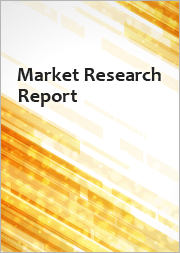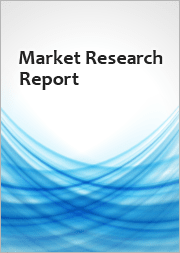
|
시장보고서
상품코드
1836402
세계의 나노 재료 기반 포장 시장 예측(-2032년) : 나노 재료 유형별, 포장 유형별, 용도별, 지역별 분석Nanomaterial-based Packaging Market Forecasts to 2032 - Global Analysis By Nanomaterial Type, Packaging Type, Application, and By Geography |
||||||
Stratistics MRC에 따르면 세계의 나노 재료 기반 포장 시장은 2025년 336억 달러를 차지하며 예측 기간 동안 CAGR 12.2%로 성장해 2032년까지 767억 달러에 이를 전망입니다.
나노 재료 기반 포장은 장벽 특성, 강도 및 보존성을 높이기 위해 나노 재료를 이용한 포장 솔루션에 중점을 둡니다. 나노입자, 나노복합재료 및 나노코팅을 포함한 이러한 재료는 항균성, 내열성, 기계적 이점을 제공하며 섬세한 식품, 의약품 및 전자제품을 지원합니다. 지속가능하고 기능적인 포장에 대한 수요 증가는 기술 혁신과 함께 시장 성장을 가속하고 있습니다. 제품의 안전성과 품질에 대한 소비자의 의식 증가는 첨단 포장에 대한 규제 당국의 지원과 함께 나노 재료 포장을 포장 기술의 미래 주요 부문으로 자리매김하고 채택을 더욱 촉진하고 있습니다.
유통기한과 식품안전 강화
나노 재료 기반 포장은 가스, 습기 및 자외선에 대한 장벽 특성을 향상시키는 나노 점토를 통합하여 유통 기한을 크게 연장하여 식품의 안전성을 높입니다. 이 진보는 음식의 신선도와 영양가를 유지하는 데 도움이 됩니다. 게다가, 나노물질은 미생물의 증식을 적극적으로 억제하는 항균제를 포함할 수 있어 부패와 오염의 위험을 감소시킵니다. 보다 오래 지속되고 안전한 식품을 요구하는 소비자 수요가 증가함에 따라 나노 재료 기반 포장 솔루션의 채택은 점점 더 중요해지고 시장 성장을 가속하고 엄격한 식품 안전 규정과 일치합니다.
확장성 문제
유망한 이점이 있음에도 불구하고, 나노물질 기반 포장의 확장성은 여전히 큰 도전입니다. 나노 점토 및 기타 나노물질의 제조 공정은 복잡하고 비용이 많이 드는 방법을 포함하는 경우가 많으며, 많은 기업에서 대규모 제조를 경제적으로 실현할 수 없습니다. 또한 이러한 재료를 기존 포장 라인에 통합하려면 특수 장비와 전문 지식이 필요하며 비용이 더욱 증가합니다. 이러한 확장성 문제는 특히 중소기업에서의 보급을 방해하고 시장 성장을 지연시킬 수 있습니다.
전자상거래 성장
전자상거래의 급속한 확장은 나노물질 기반 포장에 큰 기회를 제공합니다. 온라인 쇼핑이 증가함에 따라 운송 중 제품 무결성을 보장하는 포장 솔루션에 대한 요구가 커지고 있습니다. 강화된 장벽 특성과 보호 기능을 가진 나노 재료는 장거리 수송 중에 많은 습기, 산소, 빛과 같은 환경 요인으로부터 제품을 보호할 수 있습니다. 이 능력은 부패하기 쉬운 상품, 전자 기기, 의약품에 특히 유용합니다. 전자상거래 채널에서 안정적인 보호 포장에 대한 수요가 증가함에 따라 나노 재료 기반 솔루션의 채택이 촉진되고 있습니다.
일반 시민의 인식
나노재료의 안전성과 환경에 미치는 영향에 대한 우려는 소비자의 저항으로 이어질 수 있습니다. 잠재적인 건강 위험과 나노물질의 장기적인 영향에 대한 오해는 소비자가 이러한 기술로 포장된 제품을 받아들이는 것을 망설일 수 있습니다. 또한, 나노물질에 대한 종합적인 규제 프레임워크나 표준화된 시험 방법이 없는 것도 일반 소비자의 불안을 조장하고 있습니다.
COVID-19의 영향:
COVID-19의 유행은 나노물질 기반 포장 시장에 이중 영향을 미쳤습니다. 한편, 특히 식품 및 의약품 분야에서의 포장 상품 수요 증가는 제품의 안전성과 보존 기간을 확보하기 위한 포장 솔루션 강화의 필요성을 부각시켰습니다. 반면에 세계 공급망과 제조 공정의 혼란은 나노물질 기반 포장의 생산에 있어서 지연과 비용 증가로 이어졌습니다. 이러한 과제는 일시적으로 시장의 성장을 둔화시켰지만 위생과 안전성이 장기적으로 중시됨에 따라 첨단 포장 솔루션에 대한 수요가 지속될 것으로 예측됩니다.
나노 점토 부문은 예측 기간 동안 최대가 될 전망
나노 점토 부문은 우수한 장벽 특성, 기계적 강도 및 열 안정성으로 인해 예측 기간 동안 최대 시장 점유율을 차지할 것으로 예측됩니다. 나노 점토, 특히 몬모릴로나이트는 폴리머 기반 포장 재료의 성능을 향상시키기 위해 널리 사용됩니다. 가스, 습기, 자외선에 대한 내성을 향상시키는 능력이 있기 때문에 식품과 의약품의 보존에 이상적입니다. 산업계가 엄격한 포장 기준을 충족하기 위한 비용 효율적이고 효율적인 솔루션을 요구하는 가운데, 나노 점토 강화 포장 재료 수요는 확대되어 시장 최대의 부문으로서의 지위를 굳힐 것으로 예측됩니다.
스마트 및 지능형 포장 분야는 예측 기간 동안 가장 높은 CAGR이 예상됩니다.
예측 기간 동안 스마트 및 지능형 포장 분야는 나노기술의 첨단 포장과 제품 상태 실시간 모니터링 수요 증가에 견인되어 가장 높은 성장률을 나타낼 것으로 예측됩니다. 센서 및 표시기와 같은 스마트 포장 솔루션은 온도, 습도 및 신선도에 대한 정보를 제공하여 소비자 신뢰와 제품 품질을 향상시킬 수 있습니다. 이러한 시스템에 나노 재료를 통합함으로써 보다 작고 효율적이며 내구성 있는 디바이스를 구현할 수 있습니다. 산업계가 소비자 경험과 제품의 무결성을 우선시함에 따라, 스마트 및 지능형 포장 분야는 급속히 확대하는 태세를 정비하고 있습니다.
최대 점유율을 차지하는 지역
예측 기간 동안 아시아태평양이 가장 큰 시장 점유율을 차지할 것으로 예측됩니다. 이러한 이점은 급속한 산업화, 소비자 기반 확대, 중국, 인도, 일본 등 국가의 포장 상품 수요 증가로 인한 것입니다. 또한, 이 지역의 강력한 제조 능력과 연구 개발에 대한 투자는 첨단 포장 기술의 보급에 기여하고 있습니다. 이러한 요인들이 결합됨에 따라 아시아태평양은 세계 나노 재료 기반 포장 시장의 선두 주자로 자리매김하고 있습니다.
CAGR이 가장 높은 지역:
예측 기간 동안 아시아태평양이 가장 높은 CAGR을 나타낼 것으로 예측됩니다. 이 성장은 전자상거래 부문의 확대, 식품 안전에 대한 소비자 의식 증가, 지속가능한 포장 솔루션을 추진하는 정부의 지원 방안에 의해 야기됩니다. 인도나 중국과 같은 국가에서는 포장 성능을 강화하고 국제 기준을 충족시키기 위해 나노기술을 채택하는 경향이 강해지고 있습니다. 이 지역의 역동적인 시장 환경과 혁신에 초점을 맞추면 나노 재료 기반 포장 및 솔루션의 급속한 채택을 촉진하고 세계 최고의 성장률로 이어질 것으로 예측됩니다.
사용자 정의 무료 제공:
이 보고서를 구독하는 고객은 다음 무료 맞춤설정 옵션 중 하나를 사용할 수 있습니다.
- 기업 프로파일
- 추가 시장 기업의 종합적 프로파일링(3개사까지)
- 주요 기업의 SWOT 분석(3개사까지)
- 지역 세분화
- 고객의 관심에 응한 주요국 시장 추계, 예측 및 CAGR(주 : 타당성 확인에 따름)
- 경쟁 벤치마킹
- 제품 포트폴리오, 지리적 존재, 전략적 제휴에 기반한 주요 기업 벤치마킹
목차
제1장 주요 요약
제2장 서문
- 개요
- 이해관계자
- 조사 범위
- 조사 방법
- 데이터 마이닝
- 데이터 분석
- 데이터 검증
- 조사 접근
- 조사 자료
- 1차 조사 자료
- 2차 조사 정보원
- 전제조건
제3장 시장 동향 분석
- 성장 촉진요인
- 억제요인
- 기회
- 위협
- 용도 분석
- 신흥 시장
- COVID-19의 영향
제4장 Porter's Five Forces 분석
- 공급기업의 협상력
- 구매자의 협상력
- 대체품의 위협
- 신규 참가업체의 위협
- 경쟁 기업간 경쟁 관계
제5장 세계의 나노 재료 기반 포장 시장 : 나노 재료 유형별
- 나노입자
- 은 나노 입자
- 산화아연 나노입자
- 이산화티탄 나노입자
- 기타 나노입자
- 나노 점토
- 나노섬유
- 나노튜브
- 기타 나노 재료
제6장 세계 나노 재료 기반의 포장 시장 : 포장 유형별
- 활성 포장
- 개선된 포장
- 베리어 포장
- 기계 강도 포장
- 스마트 및 지능형 포장
- 생분해성 포장
제7장 세계 나노 재료 기반 포장 시장 : 용도별
- 식품
- 신선식품
- 가공식품
- 음료
- 의약품 및 헬스케어
- 퍼스널케어 및 화장품
- 전자기기 및 소비재
- 기타 용도
제8장 세계 나노 재료 기반 포장 시장 : 지역별
- 북미
- 미국
- 캐나다
- 멕시코
- 유럽
- 독일
- 영국
- 이탈리아
- 프랑스
- 스페인
- 기타 유럽
- 아시아태평양
- 일본
- 중국
- 인도
- 호주
- 뉴질랜드
- 한국
- 기타 아시아태평양
- 남미
- 아르헨티나
- 브라질
- 칠레
- 기타 남미
- 중동 및 아프리카
- 사우디아라비아
- 아랍에미리트(UAE)
- 카타르
- 남아프리카
- 기타 중동 및 아프리카
제9장 주요 발전
- 계약, 파트너십, 협업, 합작투자
- 인수와 합병
- 신제품 발매
- 사업 확대
- 기타 주요 전략
제10장 기업 프로파일링
- Amcor Limited
- Avery Dennison Corporation
- BASF SE
- Honeywell International Inc.
- 3M Company
- Sealed Air Corporation
- DuPont de Nemours, Inc.
- Evonik Industries AG
- Klockner Pentaplast
- Tetra Pak International SA
- Sonoco Products Company
- PPG Industries, Inc.
- Chevron Phillips Chemical Company LLC
- Mitsubishi Gas Chemical Company, Inc.
- Arkema Group
- Nanophase Technologies Corporation
- Nanocor, Inc.
- Cabot Corporation
- Nanocomposix
According to Stratistics MRC, the Global Nanomaterial-based Packaging Market is accounted for $33.6 billion in 2025 and is expected to reach $76.7 billion by 2032 growing at a CAGR of 12.2% during the forecast period. Nanomaterial-based packaging focuses on packaging solutions utilizing nanomaterials to enhance barrier properties, strength, and shelf life. These materials, including nanoparticles, nanocomposites, and nanocoatings, provide antimicrobial, thermal, and mechanical benefits, supporting sensitive food, pharmaceutical, and electronic products. Rising demand for sustainable and functional packaging, coupled with technological innovation, is driving market growth. Increasing consumer awareness about product safety and quality, along with regulatory support for advanced packaging, is further propelling adoption, positioning nanomaterial packaging as a key segment in the future of packaging technologies.
Market Dynamics:
Driver:
Enhanced Shelf Life & Food Safety
Nanomaterial-based packaging significantly extends the shelf life and enhances food safety by incorporating nanoclays, which improve barrier properties against gases, moisture, and UV light. This advancement helps in preserving the freshness and nutritional quality of food products. Additionally, nanomaterials can incorporate antimicrobial agents that actively inhibit microbial growth, reducing spoilage and contamination risks. As consumer demand for longer-lasting and safer food products rises, the adoption of nanomaterial-based packaging solutions becomes increasingly vital, driving market growth and aligning with stringent food safety regulations.
Restraint:
Scalability Issues
Despite the promising benefits, the scalability of nanomaterial-based packaging remains a significant challenge. The production processes for nanoclays and other nanomaterials often involve complex and costly methods, making large-scale manufacturing economically unfeasible for many companies. Moreover, the integration of these materials into existing packaging lines requires specialized equipment and expertise, further increasing costs. These scalability issues hinder widespread adoption, particularly among small and medium-sized enterprises, and may delay the market's growth potential.
Opportunity:
E-commerce Growth
The rapid expansion of e-commerce presents a substantial opportunity for nanomaterial-based packaging. As online shopping increases, there is a heightened need for packaging solutions that ensure product integrity during transit. Nanomaterials, with their enhanced barrier properties and protective features, can safeguard products from environmental factors such as moisture, oxygen, and light, which are prevalent during long-distance shipping. This capability is particularly beneficial for perishable goods, electronics, and pharmaceuticals. The growing demand for reliable and protective packaging in e-commerce channels is driving the adoption of nanomaterial-based solutions.
Threat:
Public Perception
Concerns regarding the safety and environmental impact of nanomaterials can lead to consumer resistance. Misconceptions about potential health risks and the long-term effects of nanomaterials may deter consumers from accepting products packaged with these technologies. Additionally, the lack of comprehensive regulatory frameworks and standardized testing methods for nanomaterials contributes to public apprehension.
Covid-19 Impact:
The COVID-19 pandemic had a dual impact on the nanomaterial-based packaging market. On one hand, the increased demand for packaged goods, especially in the food and pharmaceutical sectors, highlighted the need for enhanced packaging solutions to ensure product safety and shelf life. On the other hand, disruptions in global supply chains and manufacturing processes led to delays and increased costs in the production of nanomaterial-based packaging. These challenges temporarily slowed market growth; however, the long-term emphasis on hygiene and safety is expected to drive sustained demand for advanced packaging solutions.
The nanoclays segment is expected to be the largest during the forecast period
The nanoclays segment is expected to account for the largest market share during the forecast period due to their superior barrier properties, mechanical strength, and thermal stability. Nanoclays, particularly montmorillonite, are widely used to enhance the performance of polymer-based packaging materials. Their ability to improve resistance to gases, moisture, and UV light makes them ideal for preserving food and pharmaceutical products. As industries seek cost-effective and efficient solutions to meet stringent packaging standards, the demand for nanoclay-enhanced packaging materials is expected to grow, solidifying their position as the largest segment in the market.
The smart/intelligent packaging segment is expected to have the highest CAGR during the forecast period
Over the forecast period, the smart/intelligent packaging segment is predicted to witness the highest growth rate, driven by advancements in nanotechnology and the increasing demand for real-time monitoring of product conditions. Smart packaging solutions, such as sensors and indicators, can provide information on temperature, humidity, and freshness, enhancing consumer confidence and product quality. The integration of nanomaterials into these systems allows for more compact, efficient, and durable devices. As industries prioritize consumer experience and product integrity, the smart/intelligent packaging segment is poised for rapid expansion.
Region with largest share:
During the forecast period, the Asia Pacific region is expected to hold the largest market share. This dominance is attributed to rapid industrialization, a growing consumer base, and increasing demand for packaged goods in countries like China, India, and Japan. Additionally, the region's strong manufacturing capabilities and investments in research and development contribute to the widespread adoption of advanced packaging technologies. The combination of these factors positions Asia Pacific as a leader in the global nanomaterial-based packaging market.
Region with highest CAGR:
Over the forecast period, the Asia Pacific region is anticipated to exhibit the highest CAGR. This growth is driven by the expanding e-commerce sector, rising consumer awareness about food safety, and supportive government initiatives promoting sustainable packaging solutions. Countries like India and China are increasingly adopting nanotechnology to enhance packaging performance and meet international standards. The region's dynamic market environment and focus on innovation are expected to propel the rapid adoption of nanomaterial-based packaging solutions, leading to the highest growth rate globally.
Key players in the market
Some of the key players in Nanomaterial-based Packaging Market include Amcor Limited, Avery Dennison Corporation, BASF SE, Honeywell International Inc., 3M Company, Sealed Air Corporation, DuPont de Nemours, Inc., Evonik Industries AG, Klockner Pentaplast, Tetra Pak International S.A., Sonoco Products Company, PPG Industries, Inc., Chevron Phillips Chemical Company LLC, Mitsubishi Gas Chemical Company, Inc., Arkema Group, Nanophase Technologies Corporation, Nanocor, Inc., Cabot Corporation, and Nanocomposix.
Key Developments:
In April 2025, BASF will expand its production capacity for semiconductor-grade sulfuric acid (H2SO4), which is an essential ultra-pure chemical. The new production facility at its Ludwigshafen site in Germany will feature cutting-edge purity capabilities to serve growing demand for advanced semiconductor chip manufacturing across Europe. Operations are expected to start by 2027, coinciding with the capacity expansion of key customers. The BASF investment will be in a high double-digit million-euro range.
In August 2024, DuPont completed the acquisition of assets from C3Nano Inc., a materials company specialized in silver nanowire technology and transparent conductive films.
In March 2023, Amcor entered a joint research agreement with Nfinite Nanotechnology to develop nanocoating technology for recyclable and compostable packaging that provides enhanced oxygen barriers and sustainability.
Nanomaterials Types Covered:
- Nanoparticles
- Nanoclays
- Nanofibers
- Nanotubes
- Other Nanomaterials
Packaging Types Covered:
- Active Packaging
- Improved Packaging
- Smart/Intelligent Packaging
- Biodegradable Packaging
Applications Covered:
- Food & Beverage
- Pharmaceuticals & Healthcare
- Personal Care & Cosmetics
- Electronics & Consumer Goods
- Other Applications
Regions Covered:
- North America
- US
- Canada
- Mexico
- Europe
- Germany
- UK
- Italy
- France
- Spain
- Rest of Europe
- Asia Pacific
- Japan
- China
- India
- Australia
- New Zealand
- South Korea
- Rest of Asia Pacific
- South America
- Argentina
- Brazil
- Chile
- Rest of South America
- Middle East & Africa
- Saudi Arabia
- UAE
- Qatar
- South Africa
- Rest of Middle East & Africa
What our report offers:
- Market share assessments for the regional and country-level segments
- Strategic recommendations for the new entrants
- Covers Market data for the years 2024, 2025, 2026, 2028, and 2032
- Market Trends (Drivers, Constraints, Opportunities, Threats, Challenges, Investment Opportunities, and recommendations)
- Strategic recommendations in key business segments based on the market estimations
- Competitive landscaping mapping the key common trends
- Company profiling with detailed strategies, financials, and recent developments
- Supply chain trends mapping the latest technological advancements
Free Customization Offerings:
All the customers of this report will be entitled to receive one of the following free customization options:
- Company Profiling
- Comprehensive profiling of additional market players (up to 3)
- SWOT Analysis of key players (up to 3)
- Regional Segmentation
- Market estimations, Forecasts and CAGR of any prominent country as per the client's interest (Note: Depends on feasibility check)
- Competitive Benchmarking
- Benchmarking of key players based on product portfolio, geographical presence, and strategic alliances
Table of Contents
1 Executive Summary
2 Preface
- 2.1 Abstract
- 2.2 Stake Holders
- 2.3 Research Scope
- 2.4 Research Methodology
- 2.4.1 Data Mining
- 2.4.2 Data Analysis
- 2.4.3 Data Validation
- 2.4.4 Research Approach
- 2.5 Research Sources
- 2.5.1 Primary Research Sources
- 2.5.2 Secondary Research Sources
- 2.5.3 Assumptions
3 Market Trend Analysis
- 3.1 Introduction
- 3.2 Drivers
- 3.3 Restraints
- 3.4 Opportunities
- 3.5 Threats
- 3.6 Application Analysis
- 3.7 Emerging Markets
- 3.8 Impact of Covid-19
4 Porters Five Force Analysis
- 4.1 Bargaining power of suppliers
- 4.2 Bargaining power of buyers
- 4.3 Threat of substitutes
- 4.4 Threat of new entrants
- 4.5 Competitive rivalry
5 Global Nanomaterial-based Packaging Market, By Nanomaterial Type
- 5.1 Introduction
- 5.2 Nanoparticles
- 5.2.1 Silver Nanoparticles
- 5.2.2 Zinc Oxide Nanoparticles
- 5.2.3 Titanium Dioxide Nanoparticles
- 5.2.4 Other Nanoparticles
- 5.3 Nanoclays
- 5.4 Nanofibers
- 5.5 Nanotubes
- 5.6 Other Nanomaterials
6 Global Nanomaterial-based Packaging Market, By Packaging Type
- 6.1 Introduction
- 6.2 Active Packaging
- 6.3 Improved Packaging
- 6.3.1 Barrier Packaging
- 6.3.2 Mechanical Strength Packaging
- 6.4 Smart/Intelligent Packaging
- 6.5 Biodegradable Packaging
7 Global Nanomaterial-based Packaging Market, By Application
- 7.1 Introduction
- 7.2 Food & Beverage
- 7.2.1 Fresh Food
- 7.2.2 Processed Food
- 7.2.3 Beverages
- 7.3 Pharmaceuticals & Healthcare
- 7.4 Personal Care & Cosmetics
- 7.5 Electronics & Consumer Goods
- 7.6 Other Applications
8 Global Nanomaterial-based Packaging Market, By Geography
- 8.1 Introduction
- 8.2 North America
- 8.2.1 US
- 8.2.2 Canada
- 8.2.3 Mexico
- 8.3 Europe
- 8.3.1 Germany
- 8.3.2 UK
- 8.3.3 Italy
- 8.3.4 France
- 8.3.5 Spain
- 8.3.6 Rest of Europe
- 8.4 Asia Pacific
- 8.4.1 Japan
- 8.4.2 China
- 8.4.3 India
- 8.4.4 Australia
- 8.4.5 New Zealand
- 8.4.6 South Korea
- 8.4.7 Rest of Asia Pacific
- 8.5 South America
- 8.5.1 Argentina
- 8.5.2 Brazil
- 8.5.3 Chile
- 8.5.4 Rest of South America
- 8.6 Middle East & Africa
- 8.6.1 Saudi Arabia
- 8.6.2 UAE
- 8.6.3 Qatar
- 8.6.4 South Africa
- 8.6.5 Rest of Middle East & Africa
9 Key Developments
- 9.1 Agreements, Partnerships, Collaborations and Joint Ventures
- 9.2 Acquisitions & Mergers
- 9.3 New Product Launch
- 9.4 Expansions
- 9.5 Other Key Strategies
10 Company Profiling
- 10.1 Amcor Limited
- 10.2 Avery Dennison Corporation
- 10.3 BASF SE
- 10.4 Honeywell International Inc.
- 10.5 3M Company
- 10.6 Sealed Air Corporation
- 10.7 DuPont de Nemours, Inc.
- 10.8 Evonik Industries AG
- 10.9 Klockner Pentaplast
- 10.10 Tetra Pak International S.A.
- 10.11 Sonoco Products Company
- 10.12 PPG Industries, Inc.
- 10.13 Chevron Phillips Chemical Company LLC
- 10.14 Mitsubishi Gas Chemical Company, Inc.
- 10.15 Arkema Group
- 10.16 Nanophase Technologies Corporation
- 10.17 Nanocor, Inc.
- 10.18 Cabot Corporation
- 10.19 Nanocomposix







